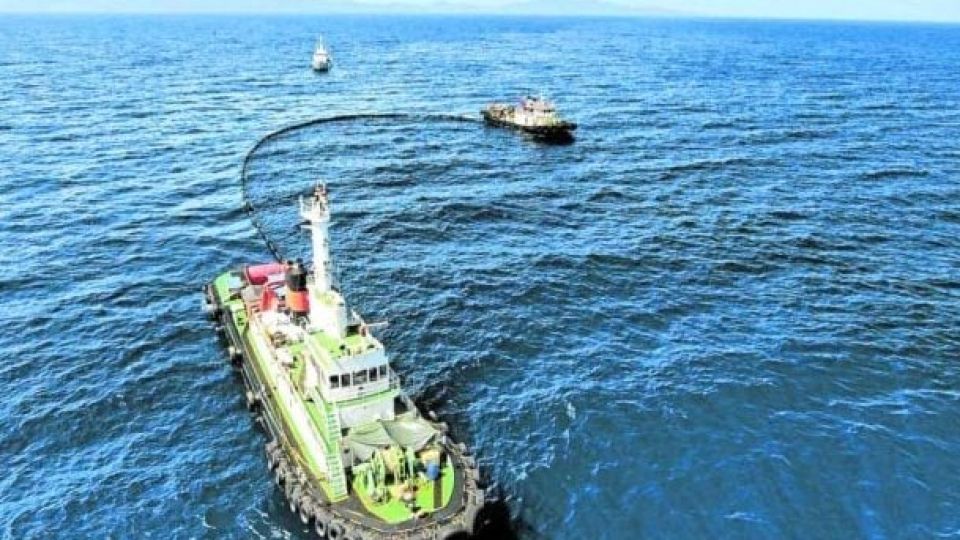April 4, 2023
MANILA — To characterize environmental disasters and how people and governments respond to them, environmental humanities scholar Rob Nixon coined the term “slow violence,” which he defines as “violence that occurs gradually and out of sight, a violence of delayed destruction that is dispersed across time and space, an attritional violence that is typically not viewed as violence at all.” Nixon offered various examples of this kind of violence—from the toxic pollution from petrochemical infrastructure to the construction of mega dams—noting that these kinds of slow violence cannot match the political and emotional power of “falling bodies, burning towers, exploding heads, avalanches, volcanoes, and tsunamis.”
I cannot help but be reminded of this concept when I think of the oil spills in our country.
The Guimaras oil spill in 2006 is surely the most notorious among these. Sinking in Panay Gulf, with over 2.1 million liters of oil, the demise of MT Solar 1—operated by Sunshine Maritime Development Corp. and hired by Petron Corp.—remains one of the country’s worst environmental disasters. Environmental and socioeconomic devastation ensued within weeks, with various species and habitats—from mangroves to coral reefs—affected, and many livelihoods—from fishing to ecotourism—lost. After a few months of public attention, the Guimaras spill quickly faded away in public consciousness, even as the process of recovery and rehabilitation lasted for over a decade.
Meanwhile, the Mindoro oil spill, which happened just a month ago—Feb. 28—off Mindoro, is an illustration of slow violence taking place in real time. Like MT Solar 1, where initial inquiries implicated overloading and incompetence as contributory to the sinking, the “engine problems” that led to the sinking of MT Princess Empress, as well as its reported lack of permit, raises questions of why the ferry carrying 800,000 liters of industrial fuel and oil sank—and why it was allowed to operate in the first place. As in Guimaras, catastrophic damage ensued—and is still spreading—across Mindoro, Palawan, and Batangas, compromising the Verde Island Passage, a critical waterway both for commerce and biodiversity.
In fairness to then President Gloria Macapagal Arroyo, she herself led the recovery effort in Guimaras, visiting the island and forming an interagency task force within two weeks of the spill. In contrast, President Marcos has not shown the same commitment and sense of urgency that matches the gravity of the situation. Indeed, it’s been over a month since the spill but demands for assistance, accountability, and reparations remain largely unmet—and the cleanup itself has been described by environmental advocates as “slow” and “lackluster.”
Correspondingly, the media and public attention also hasn’t been commensurate with the magnitude of the spill.
Aside from the inevitable desensitization to any event, what can explain the relative lack of attention toward the Mindoro oil spill? Are we affected by a “land-based thinking” that sees water not as a matter of concern; a domain outside our everyday lives? What are the factors that constrain our people’s ecological consciousness? I am reminded of what Kuya Jun-Jun, a guide in Masungi, told me weeks ago: “The problem with Filipinos is that people don’t care about water, they just throw things in the river without thinking where it would end up in.” And what urban geographer Kristian Saguin wrote of Laguna de Bay: that people imagine it as “convenient frontier, a ready and pliable source of fish and domestic water, and as a sink for wastes and floodwaters”: Something that may be said of our bodies of water.
Part of it, too, is that people’s attention and outrage is directed elsewhere; even environmentalists are spread thin with so many issues to raise—from the construction of Kaliwa Dam to the still-uncertain fate of Sibuyan Island. For many Filipinos, too, the mayhem in Metro Manila—whether in Ninoy Aquino International Airport or the Manila Metro Rail Transit System—are far more pressing problems.
But the president remains the chief driver of popular and political attention—just look at Duterte’s inordinate focus on drugs—which is why his (in)action matters even more so. While he and much of the nation can afford to keep the Mindoro oil spill, in Nixon’s words, “out of sight,” the same cannot be said of more than 34,000 families (and counting)—and countless species—that are suffering the consequences of an ecological and governmental mess that we ought to call out for what it is: violence.


